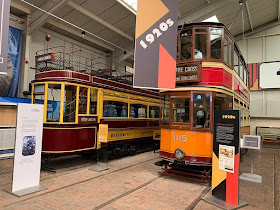The Class 317 EMU is a class of electric multiple unit based on the Mark 3 coach design, similar to the
Classes 313 and
455 amongst others. Built in the early 1980s, they are hard working veterans still carrying passengers daily into London though their days are now numbered with final withdrawal due later this year.
The Class 317 was the first British Rail multiple unit designed for driver only operation though this did result in a delay in their introduction into service because of a dispute with the unions [1][2]. Most of the Class 317's service life to date has been on suburban services to London from the likes of
Bedford and
Luton though for a time in the late 1980s they did venture as far afield as
Birmingham New Street.
 |
| Greater Anglia 317 510 at London Liverpool Street |
| Information |
| Number built: |
288 (72 4-car sets) |
| Built: |
1981-82, 1985-86 |
| Builder: |
BREL York |
| Engine: |
4 GEC G315BZ traction motors (25kV AC OLHE) |
| Power: |
1, 328 hp (990 kW) |
| Formation: |
Driving Trailer Standard Open (DTSO)+Motor Standard Open
(MSO)+Trailer Composite Open (TCO)+DTSO |
The Class 317 was built in two batches, the first batch
317/1 was built for
London St Pancras to
Bedford services. A second batch
317/2 was built a little later for services out of
London Kings Cross. In the late 1990s some units were refurbished and upgraded, including fitting a new pantograph, as the
317/6. In the mid-2000s some 317s were refurbished as
317/7 for the Stansted Express,
317/5 for Greater Anglia services while others were refurbished and updated as
317/8.
They now operated only by Greater Anglia. There was a plan to re-traction the Class 317 which could have given them another twenty years of service however these plans have now been cancelled. The Class 317 is now being replaced by new
Class 720 Aventras.
 |
| 317 341 at Finsbury Park |
 |
| Greater Anglia 317 652 passes through Cambridge Heath |
 |
| The other end of 652! |
[1] Alec Swain, Overhead Line Electric Multiple-Units (Ian Allan, 1990) p. 71
[2] John Glover, BR Diary 1978-1985 (Ian Allan, 1985) p. 81































